Sedum alboroseum 'Mediovariegatum'
STRIPED SEDUM, VARIEGATED SEDUM
syn. Sedum erythrosticum f. variegatum
Family: Crassulaceae
Pronounced: SAY-dum
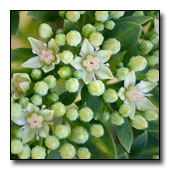
Quick Jumps
Growing Guide
Rainy Side Notes
GROWING GUIDE
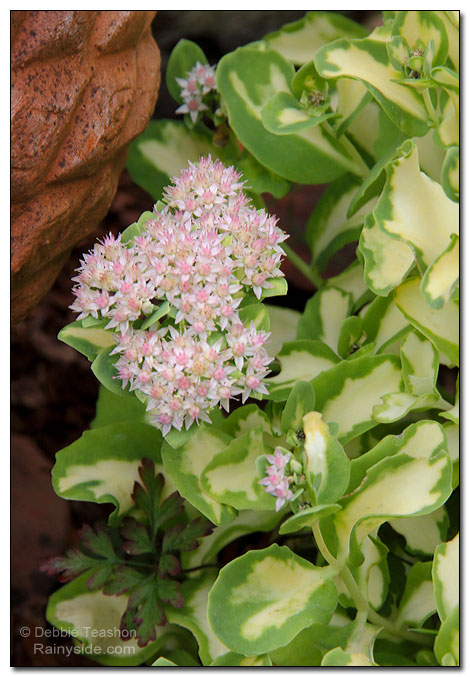
Origin:
Garden.
Plant Group:
Perennial.
Hardiness:
Sunset zones: 3-24.
USDA zones: 6-9.
Mature size:
Height 12 inches (30 cm).
Width: 18 inches (45 cm).
Flowering period:
Late summer.
Flowering attributes:
Large clusters of star-shaped, white to slightly pink tinted flowers.
Leaf attributes:
Succulent, green leaves with splashes of creamy white to pale yellow markings.
Growth habit:
Clump forming.
Light:
Full sun to partial shade.
Soil:
Average to moist, well-drained soil.
Feeding:
This sedum is not a heavy feeder but I side dress it with complete organic fertilizer and compost or manure.
Propagation Methods:
Stem cuttings. | Divisions. | My favorite: In spring pull a rosette off the main plant and transplant small rosette to new spot.
Pruning Methods:
Prune out any stems, with leaves that turn all green, to keep the variegation. If you have trouble with it flopping over, pinch it back in June.
Rainy Side Notes
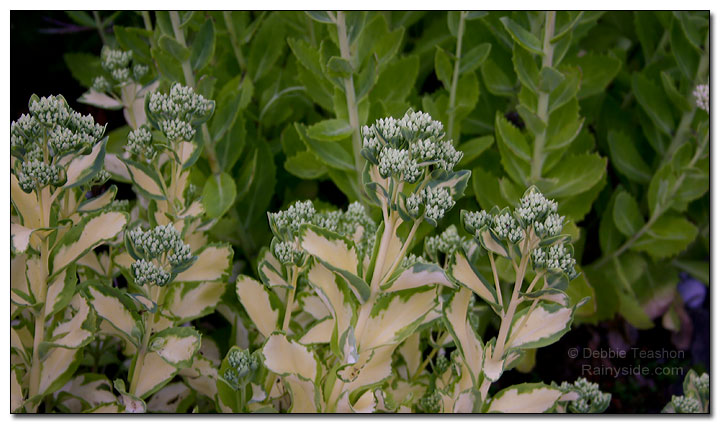
Sedum alboroseum 'Mediovariegatum' is a perennial with a huge name! It is a mouthful to pronounce.
This variegated perennial looks good enough to eat. The species this hybrid comes from is supposedly edible; I have yet dared to taste it. If it's like our native ground covering sedums, I harvested it early before the oxalic acid kicks in. Still, blech! Better yet, let the sedum grow and plant a broccoli crop for eating.
In the maritime Pacific Northwest, the clump-forming, variegated sedum grows well in the ground and a container. It reaches 12 inches or 30 centimeters tall by 18 inches or 45 centimeters wide. Grow it in USDA hardiness zones 6-9.
As with many tall sedums, this late summer bloomer performs well as a cut flower – fresh or dried. For drying cut flowers, strip the leaves and hang them upside down in a dark, well-ventilated place.
The plant dies back to the ground in winter like 'Autumn Joy.' The pairing is a beautiful combination. I also grow it in bright, partial shade, where it thrives but tends to flop.
I like growing many of my perennials on the lean side, side-dressing them with compost in the spring, and giving them a nitrogen boost from an organic source.
This plant is easy to propagate by stem cuttings and divisions. My favorite method in late winter to early spring is pulling a rosette off the main plant and transplanting it to a new spot in the garden or container.
Prune out any stems with leaves that turn completely green to keep the variegation going.
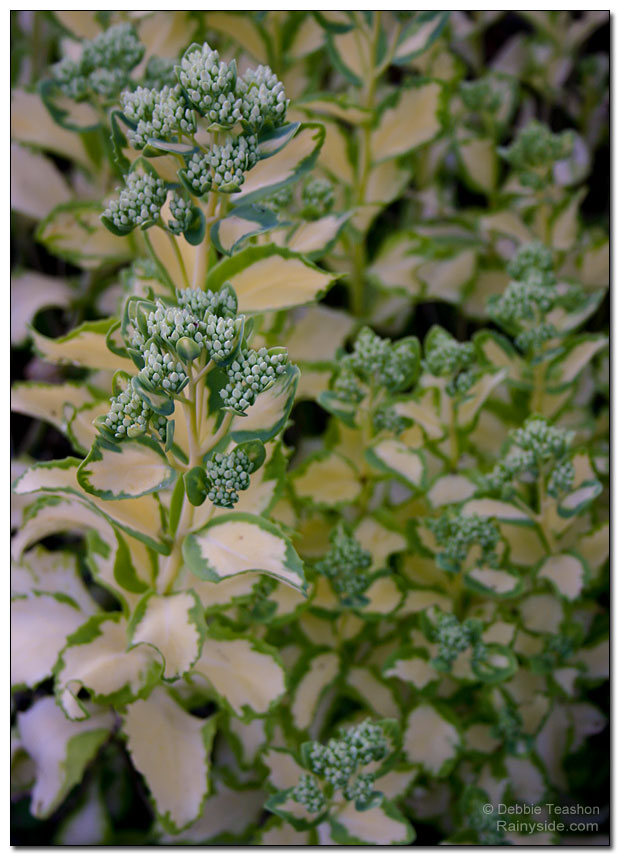
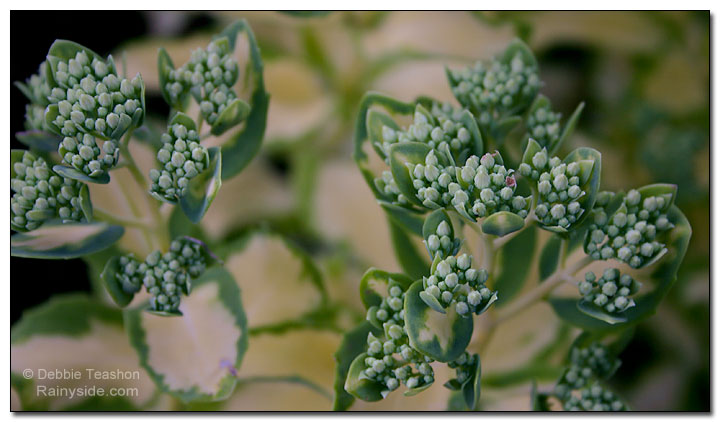
Debbie Teashon
Photographed in author's garden.

Gardening for the Homebrewer: Grow and Process Plants for Making Beer, Wine, Gruit, Cider, Perry, and More
By co-authors Debbie Teashon (Rainy Side Gardeners) and Wendy Tweton
Copyright Notice | Home | Search | Perennials

